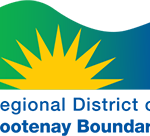All Along the Pipeline
By Michael Jessen
Written in 1967, Bob Dylan’s All Along the Watchtower simmers with images of an impending day of reckoning. A mysterious and understated poem of simple rhyming couplets, it is the ideal musical accompaniment to the reality of today’s war on oil from Alberta’s tar sands.
The businessmen and plowmen of Dylan’s song are the representatives of TransCanada Corporation who want to dig up the Earth to lay a 2,673-kilometre (1,661-mile), 36-inch pipeline to deliver bitumen to the U.S. Gulf Coast.
If it goes ahead, the pipeline will ferry as much as 1.3 million barrels per day of heavy crude from Hardisty, Alberta through Saskatchewan and cross five states as well as the Missouri, Yellowstone and Red Rivers, the Nebraska Sandhills and the Ogallala aquifer to Cushing, Oklahoma. Additional pipeline phases would see the oil delivered to refineries in Nederland, Texas.
It will double, and maybe triple, exports of Canadian crude to our southern neighbour and crude is the operative word. This diluted bitumen or “DilBit” – is a highly corrosive, acidic, and potentially unstable blend of thick raw bitumen and volatile natural gas liquid condensate that contains benzene and other toxic chemicals.
TransCanada and its supporters live in the economic moment of Canada’s energy superpower status, uncaring of the damage the $13 billion Keystone XL pipeline system will inflict on the North American environment.
Harper Government defends the tar sands
The tar sands comprise more than 97 percent of Canada’s 175 billion barrels of proven oil reserves but extracting bitumen is greenhouse gas intensive – three times greater than conventional oil; Environment Canada knows it and the U.S. Environmental Protection Agency knows it. The Harper government doesn’t worry about such incidentals.
Canadian Prime Minister Stephen Harper defends Alberta’s tar sands as an “ethical” source of energy that creates important job growth. “I can only say that the government’s position is clear,” Harper said in January. “The oil sands represent a very important resource for this country.”
Canada’s Environment Minister Peter Kent says the tar sands have gotten a bad rap with the moniker of “dirty oil”. “There has been a lot of disinformation and outright misinformation,” Kent has stated. “There has been a demonizing of a legitimate resource . . . It is ethical oil. It is regulated oil. And it’s secure oil in a world where many of the free world’s oil sources are somewhat less secure.”
Little wonder then that the Canadian government has been secretly lobbying European and American executives and politicians since 2009 to “protect and advance Canadian interests related to the oil sands,” fearing a drop in European investment in the industry and EU restrictions on tar sands imports that might be mimicked in the U.S.
Gary Doer, Canada’s ambassador to the United States has been traveling the country making the case for the oil sands. Doer has been stressing the fact that more than 900 U.S. companies supply the oil sands with everything from the massive 470-ton Caterpillar dump trucks assembled in Decatur, Illinois to customized software.
U.S. must render Keystone XL decision by November 1
Because the pipeline crosses an international border, the U.S. State Department has to rule on the proposal. Its Final Environmental Impact Statement for the proposed Keystone XL tar sands pipeline found that there will be no significant environmental impact to most resources, but it hasn’t yet given the project a permit. U.S. President Barack Obama has been asked by Congress to render his approval or denial of the project by November 1.
The princes in the watchtowers are keeping a lookout for growling wildcats as protesters begin to howl; so far, disobedience has been civil, but the pressure is on Obama to turn thumbs down on the project.
Over 2,000 activists began arriving in Washington, DC on August 20th to line the fences around the White House. On the first day, 70 people from across the U.S. and Canada were arrested, including well-known author Bill McKibben whose 1989 book The End of Nature was the first book on global warming written for a general audience.
McKibben – a Middlebury College professor who founded the advocacy organization 350.org and the instigator of the summer sit-in – and 55 others spent two nights in jail before all charges were dropped and they were released.
Mike Tidwell, director of the Chesapeake Climate Action Network, who was arrested with McKibben, said the arrests and jailings “are already lighting a fire.”
Canadian actors among those arrested at sit-in
“More people are now inspired, determined, and committed to join,” Tidwell added. “Over 20 DC-area doctors, lawyers and students will be going to jail to chant, sing, and stop the pipeline. They’ll be joining Nebraska ranchers and others nationwide. Word is spreading.”
The daily disobedience will continue until September 3. On August 23rd, Canadian actors Margot Kidder and Tantoo Cardinal were arrested as part of the ongoing sit-in and the next day 52 others were jailed, bringing the five-day total arrested by U.S. Park Police to 275.
“I can’t think of a more important place to be,” said Kidder, known for her role as Lois Lane in four of the original Superman movies. “President Obama has the chance here to do the right thing and stop this pipeline. I’m here to help make sure he does it.”
“It’s an honour to be here with so many people from across the US,” said Tantoo Cardinal, the aboriginal actor known for her roles in Legends of the Fall, Dances with Wolves, and Smoke Signals. Cardinal was born in Fort McMurray, the capital of the tar sands. “This is about protecting our land, our water, and our climate. The tar sands destruction has to stop.”
Despite the 20,000 unionized jobs that might be created by building the pipeline, National Public Radio reports that two major unions, the Transport Workers Union and the Amalgamated Transit Union, oppose the pipeline construction, citing the potential for grave damage to the environment and human health.
Pipeline could mean ‘game over for the climate’
Dr. James Hansen, director of NASA’s Goddard Institute for Space Studies, is one scientist who has been right longer about climate change than anyone else. In a June commentary, Hansen states “exploitation of tar sands would make it implausible to stabilize climate and avoid disastrous global climate impacts.”
“If this project gains approval, it will become exceedingly difficult to control the tar sands monster,” writes Hansen in his essay Silence is Deadly. “The environmental impacts of tar sands development include: irreversible effects on biodiversity and the natural environment, reduced water quality, destruction of fragile pristine Boreal Forest and associated wetlands, aquatic and watershed mismanagement, habitat fragmentation, habitat loss, disruption to life cycles of endemic wildlife particularly bird and Caribou migration, fish deformities and negative impacts on the human health in downstream communities.”
In a July 2010 letter to the State Department, the Environmental Protection Agency made its concerns abundantly clear:
“Our calculations indicate that on an annual basis, and assuming the maximum volume of 900,000 barrels per day of pipeline capacity, annual well-to-tank emissions from the project would be 27 million metric tons carbon dioxide equivalent greater than emissions from US ‘average’ crude. Accordingly, we estimate that GHG emissions from Canadian oil sands crude would be approximately 82 percent greater than the average crude refining the US, on a well-to-time basis.”
Tar sands GHG to triple by 2020
According to a document released by Environment Canada in late July, greenhouse gas emissions from the oil sands have grown by over 150 per cent in the last 20 years. From 2005 to 2020, Environment Canada’s number show, they’re going to keep right on growing, tripling from 30 million tonnes in 2005 to 92 million tonnes in 2020. That represents 12 per cent of Canada’s projected national emissions in 2020, more than the total for any province except Alberta and Ontario.
The bottom line is that virtually the entire projected increase in Canada’s emissions between 2005 and 2020 will come from the oil sands. And that will make Canada’s 2009 commitment to reduce its greenhouse emissions to 607 megatonnes in 2020, or 17 per cent below 2005 levels, almost impossible to reach. Matthew Bramley of the Pembina Institute says the Harper government will have to start trying 10 times harder to meet its international commitments if it has any intention of meeting them.
Although Hansen hasn’t signed up for the sit-in, he’s expected to appear at 1600 Pennsylvania Ave. late in August. He has been arrested several times in the past for protesting mountaintop removal mining.
Scientist willing to risk arrest
Ohio State University climatology professor Jason Box believes approving the Keystone XL extension is equivalent to lighting a fuse to the biggest carbon bomb on the planet. He has signed up to go to Washington in September and risk arrest for his belief.
Earlier this month, Box and 19 other prominent U.S. scientists – including Hansen and Michael Mann, director of the Earth System Science Center at Pennsylvania State University – wrote a letter to Obama urging him to reject the pipeline.
“The tar sands are a huge pool of carbon, but one that does not make sense to exploit,” the scientists wrote to Obama. “When other huge oil fields or coal mines were opened in the past, we knew much less about the damage that the carbon they contained would do to the Earth’s climate system and to its oceans.
“Now that we do know, it’s imperative that we move quickly to alternate forms of energy,” they continued. “As scientists, speaking for ourselves and not for any of our institutions, we can say categorically that Keystone XL is not only not in the national interest, it’s also not in the planet’s best interest.”
Box is part of a scientific community that is becoming more vocal about its convictions.
“I feel I’m on the high ground defending this position and that I have reason on my side,” the scientist says. “The question is, will anybody listen?
“I want to believe that reason will prevail here,” he adds. “I’ve learned you never give up. That’s how I’ve been successful so far.”
Pipelines have a history of leaks and spills
With 235,000 kilometres of pipelines already built in the U.S., they have proved far too vulnerable to spills. The predecessor to Keystone XL, the Keystone pipeline, has already had 15 spills in the United States and over 20 spills in Canada since it became operational last year. Last July, an Enbridge pipeline dumped 800,000 gallons of tar sands crude into the Kalamazoo River, and the Exxon Mobil pipeline that spilled 42,000 gallons of oil into the Yellowstone River this year also carries tar sands crude.
In the first line of All Along the Watchtower, the joker says to the thief: “There must be some way out of here.”
There is. Energy efficiency and renewable sources of energy like solar, wind, geothermal and tidal are about to foster a new sustainable energy economy that will create far more jobs than oil, gas or coal.
Canada needs cohesive energy and environmental policies to do its part to combat global warming and climate change. The tar sands are not part of the recipe for those policies. Stopping construction of pipelines like Keystone XL and the $5.5 billion Enbridge Northern Gateway which would transport tar sands oil from Edmonton to Kitimat for export to Asia are the first step to shutting down the insanity of bitumen extraction.
“Oil corrupts and corrupts absolutely,” writes Andrew Nikiforuk in his book Tar Sands: Dirty Oil and the Future of a Continent. “To put it plainly, citizens of Canada and the United States who value democracy at home and abroad must consume less oil.”
We the people need to usher the fossil fuel industry out the door. Its days in the limelight of the world’s energy industry are coming to an end. It will not go quietly, but go it must. Please help push; the hour is getting late.
Michael Jessen is a Nelson eco-writer and owns the consultancy Zero Waste Solutions. He is also the Energy Critic for the Green Party of British Columbia and can be reached by e-mail at zerowaste@shaw.ca.
RESOURCES:
- The lyrics to All Along the Watchtower are at http://www.bobdylan.com/songs/all-along-the-watchtower
- To sign a petition asking Obama to reject Keystone XL, go to http://www.tarsandsaction.org/obama-petition/
- TransCanada Corporation’s website is at http://www.transcanada.com/
- Natural Resources Canada’s Oil Sands website is at http://www.nrcan.gc.ca/eneene/os-sb-eng.php
- Environment Canada’s July 2011 report Canada’s Emissions Trends can be found at http://www.ec.gc.ca/Publications/E197D5E7-1AE3-4A06-B4FC-CB74EAAAA60F%5CCanadasEmissionsTrends.pdf
- Dr. James Hansen’s essay Silence is Deadly can be found at http://www.columbia.edu/~jeh1/mailings/2011/20110603_SilenceIsDeadly.pdf
- Matthew Bramley’s blog is at http://www.pembina.org/blog/561
- Information about Alberta’s oil sands can be found at http://www.pembina.org/oil-sands and http://oilsandstruth.org/
- The Top Ten Facts About the Alberta Oil Sands are at http://www.desmogblog.com/top-10-facts-canada-alberta-oil-sands-information
- Canada’s Toxic Tar Sands: The Most Destructive Project on Earth – a February 2008 report from Environmental Defence can be downloaded at http://www.desmogblog.com/sites/beta.desmogblog.com/files/TarSands_TheReport%20final.pdf
- Info on the Northern Gateway project is at http://www.northerngateway.ca/project-info/northern-gateway-at-a-glance
- A February 2011 joint report by the Natural Resources Defense Council, National Wildlife Federation, Pipeline Safety Trust and the Sierra Club on the safety of tar sands pipelines is at http://www.nrdc.org/energy/files/tarsandssafetyrisks.pdf
- Wikipedia has a list of pipeline accidents at http://en.wikipedia.org/wiki/List_of_pipeline_accidents#2010s

























Comments